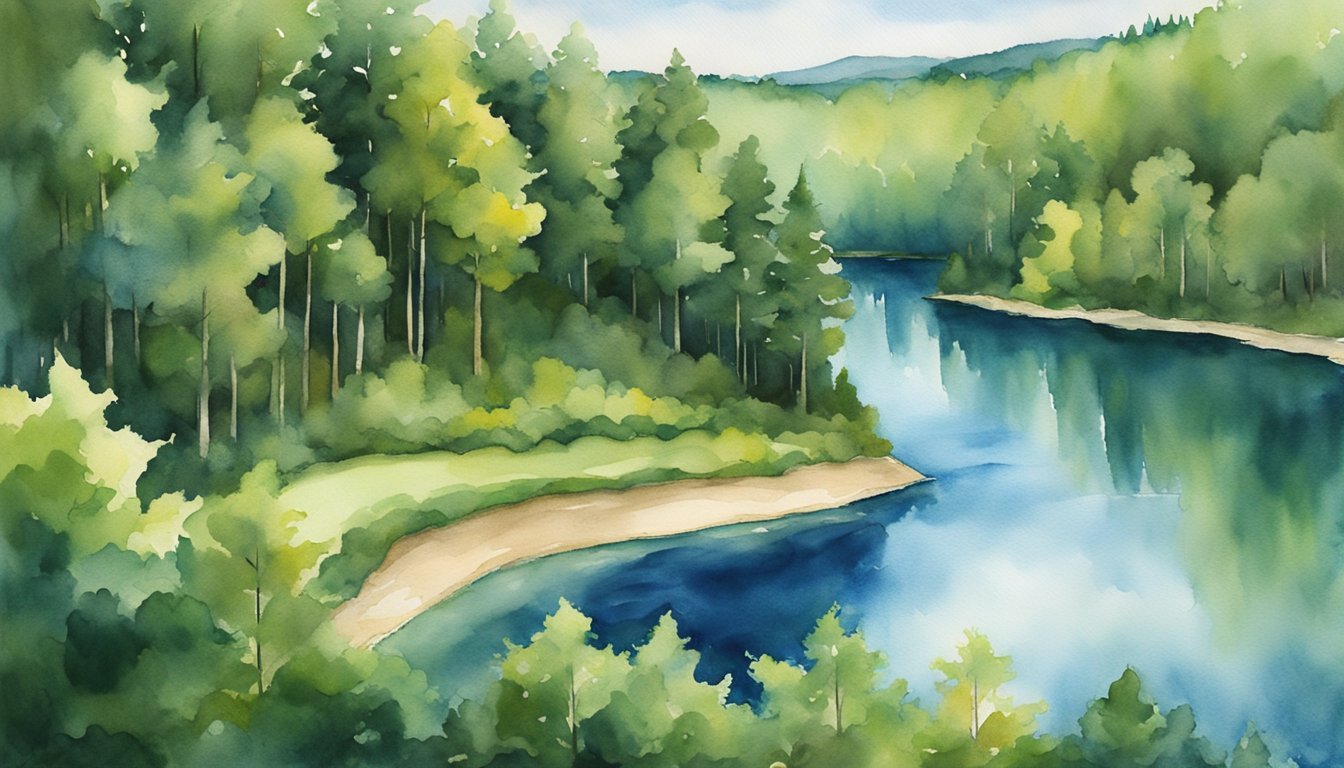Introduction to Michigan
Geography and Natural Features
Michigan is a unique state in the United States, as it is the only state consisting of two peninsulas – the Upper and Lower Peninsulas. The Upper Peninsula is sparsely populated but mineral-rich, while the Lower Peninsula is mainly an industrial area. Michigan is part of the Great Lakes region and borders Lake Michigan, Lake Superior, Lake Huron, and Lake Erie. With a 3,288-mile coastline, Michigan has the longest freshwater coastline in the United States. In addition, Michigan is home to over 11,000 inland lakes, which makes it a popular destination for fishing and boating enthusiasts.
Some of the most notable geographical features in Michigan include the Mackinac Bridge, which connects the two peninsulas, the picturesque Mackinac Island, Straits of Mackinac, the remote Isle Royale National Park, and the Porcupine Mountains in the Upper Peninsula. The highest point in the state is Mount Arvon at 1,979 feet.
Culture and Symbols
Michigan, nicknamed the “Mitten State” due to the shape of its Lower Peninsula, has a diverse culture influenced by various groups that reside within its borders. A blend of Midwestern, Great Lakes, and industrial influences can be seen in its art, music, food, and architecture.
The state has many symbols that celebrate its heritage and natural beauty. The Apple Blossom is the official state flower, while the state tree is the eastern white pine. The state bird is the robin. Michigan is also known as the birthplace of the automotive industry, with Detroit often referred to as the “Motor City.”
Statehood and Government
Michigan became the 26th state to join the United States on January 26, 1837. The capital city of Michigan is Lansing, located in the south-central part of the state, while the largest city is Detroit.
The Michigan state government operates under a constitution and has three separate branches: the executive, legislative, and judicial branches. The executive branch is led by the governor, while the legislative branch consists of a bicameral State Legislature, and the judicial branch consists of the Supreme Court of Michigan and other lower courts.
Legacy and Lifestyle

Economic Impact
Michigan, also known as the []Wolverine State, has left a significant impact on the nation’s economy. The birthplace of the American automotive industry, it is home to influential companies like General Motors and Ford. It was Henry Ford who revolutionized car manufacturing with the introduction of the assembly line in Motor City, also known as Detroit.
Aside from the automotive sector, Michigan’s economy has been rich in agriculture and manufacturing. The state’s fertile land has supported a thriving agriculture industry that contributes significantly to its overall economic growth.
Education and Research
Michigan boasts notable academic institutions such as Michigan State University and the University of Michigan, which have made great strides in research, innovation, and academic excellence. They have attracted students and researchers from around the world.
Michigan’s history and connection with Native American tribes also play an essential role in understanding its cultural evolution. The Ojibwe, Chippewa, and Potawatomi tribes have inhabited the region for generations, contributing to the state’s diverse cultural and historical tapestry.
Notable Landmarks and Tourism
Michigan is home to various landmarks and tourist attractions, showcasing its culture, heritage, and natural beauty. The Henry Ford Museum in Dearborn is a testimony to the state’s automotive history, while Motown Records, founded in Detroit, highlights its musical legacy.
Tourists can indulge in Michigan’s beautiful landscapes and pristine shorelines, with the Great Lakes serving as stunning backdrops. The state motto (“If you seek a pleasant peninsula, look about you”) and coat of arms remind residents and visitors of the wonders awaiting them within its borders.
Various state symbols represent Michigan’s rich heritage and environment. The apple blossom serves as the state flower, while the white-tailed deer is the state animal. These symbols tell the story of Michigan’s unique history and commitment to preserving their natural resources for generations to come.

